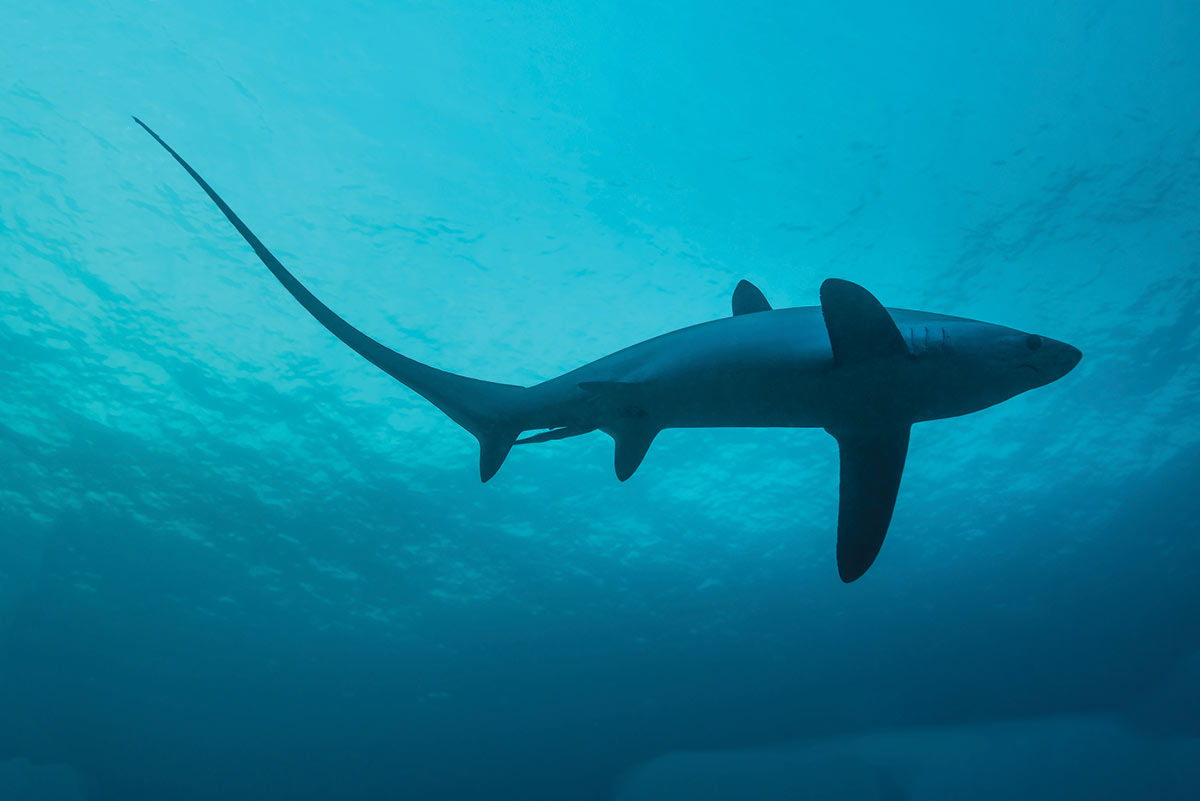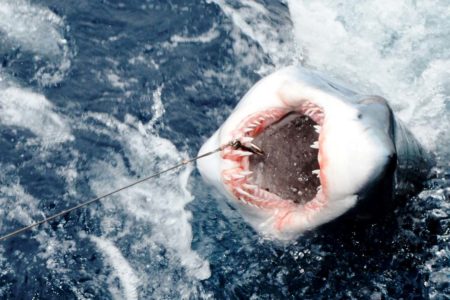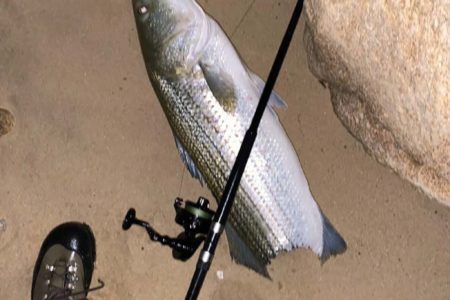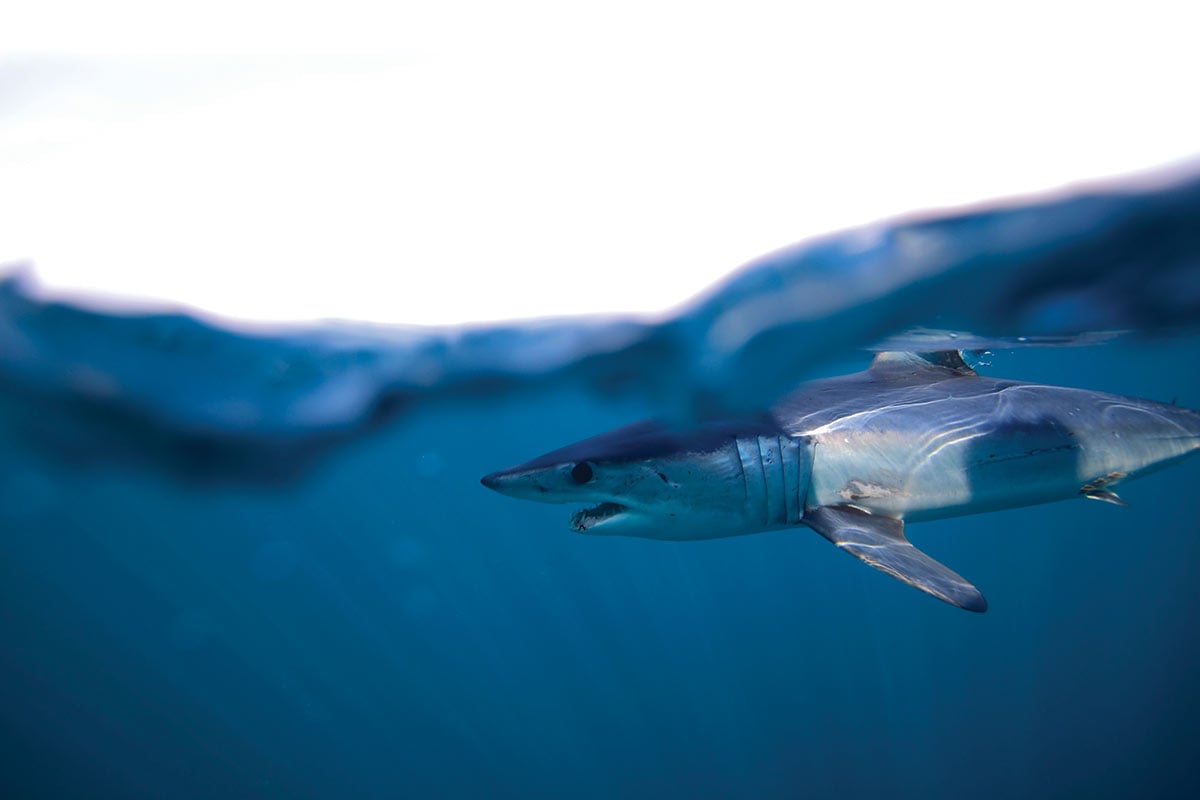
Tournament time is at hand and this season shark fishermen will be dealing with new federal regulations concerning their favorite target. New federal regulations this year require the use of non-offset, non-stainless steel circle hooks. A New York state law requiring circle hooks was already in effect. The new regulations also call for mako sharks to measure a minimum of 83 inches. This equates to a 210- to 230-pound shark.
It is important that we preserve all of our marine resources for future generations to enjoy as we do. For example, many anglers have long set their own personal or boat minimums higher than the federal size limit. Threshers too have become an easier target in recent years as a result of their presence among the near shore bunker schools; will they be able to sustain the pressure, especially given the public spotlight on sharks in recent years. When you get the opportunity, click it and clip it.Take a picture and cut them loose.
Measuring a Fish
Before you get a fish next to the boat, have a well thought out plan ready to assist in getting the best estimated fork length. Do not boat a live shark and attempt to measure it on the deck. Some fishermen have marks on their boat’s boot stripe to indicate certain lengths. As they bring the fish boat side they try to get it stretched out along the water line for a quick estimate. For years marlin fishermen have been snapping on ribbon rulers that slide down the leader to the hook and give a fairly accurate fork length measurement for tag cards. Shark fishermen are just concerned with one measurement, 83 inches. A thin piece of polypropylene line with a clip and a small float on either end will do the trick. As the shark gets close snap it on and let it out. As you slip the boat in gear the drag from the water will pull it down to the fish. Once it reaches the hook keep the boat in gear and if all goes well the fish and the line will stretch straight and you will get a decent measurement. Keep in mind the fork length is from nose to tail fork. So you may need to account for an additional 6 to 10 inches if the measure starts in the corner of the mouth and not the nose tip.
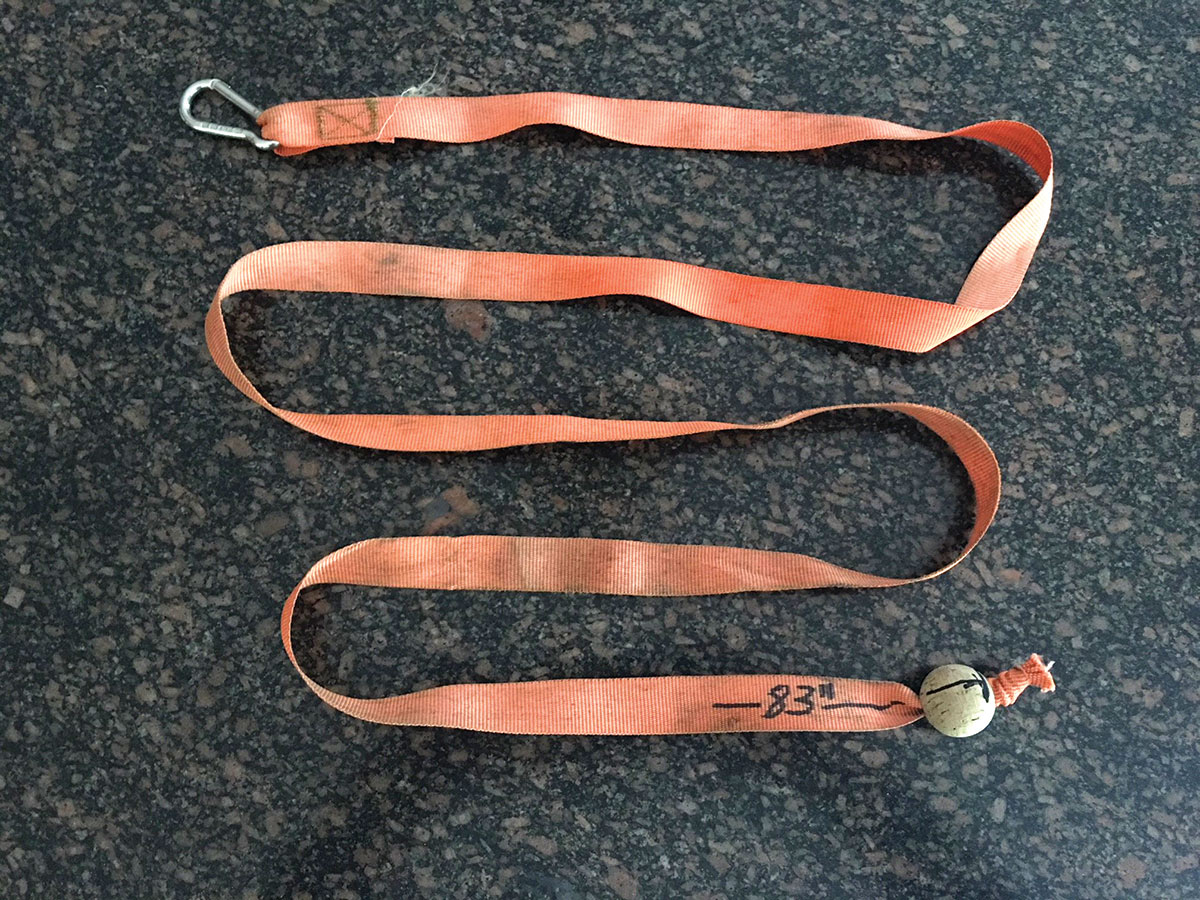
Shark Science
Sharks use all of their senses to detect food and stay away from danger. Being one of the ocean’s apex predators there isn’t much they are afraid of, but keep in mind elephants are skittish around mice, and sharks can easily spook too. As sharks swim they are constantly monitoring their environment. A shark will use smell and sound from miles away to detect a potential meal. The sound waves from wounded prey can travel great distances to ring the dinner bell. Oils, enzymes, and other scents are all factors that further validate a meal is close. The curious fish will swim from side to side and up and down and keep swimming toward the source of the stimulus. As the fish comes up the slick at some point it will catch sight of the meal. It may decide to speed up and strike, or it could cautiously circle the meal and investigate whether its food or a threat. Knowing the science regarding your quarry’s feeding habits puts you at a great advantage. Not only over the fish, but over other boats you may be competing against. If you stimulate as many senses as possible without overdoing it, you will pull a fish to your baits and entice it to strike.
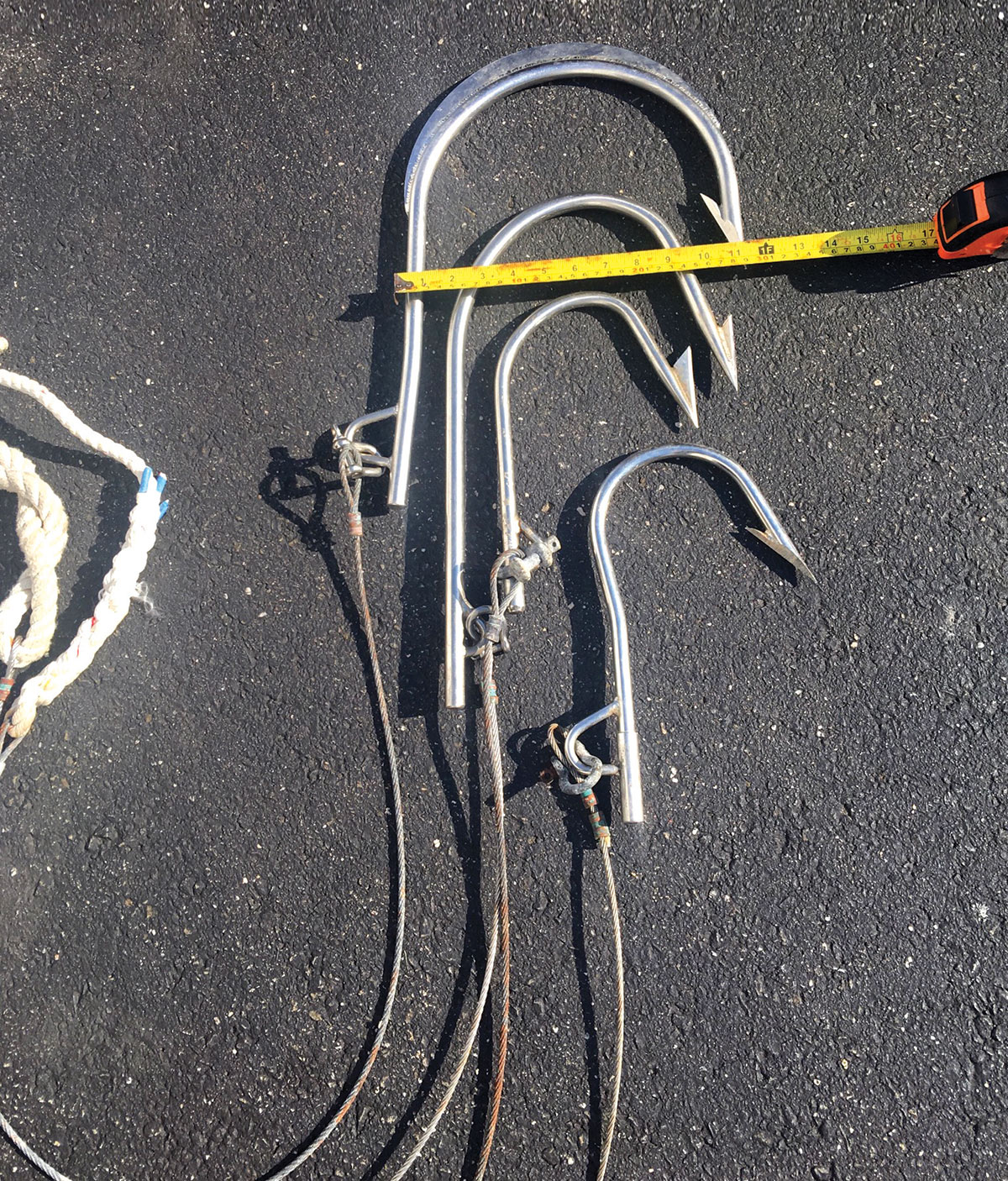
Let’s examine the process from the furthest point back. The primary attraction is scent. You should have a long, wide uninterrupted trail of oily ground fish fragments. Mixing ground bunker, mackerel and or bluefish carcasses is a deadly combination. Your slick should match your offerings. Don’t use bunker chum and only have bluefish filets as baits. This could work, but also might trigger a danger response to an experienced fish. To spice things up and keep bored crew members busy, get some chunks going into the slick. Chunks should be cut no larger than the size of a quarter. A steady rhythm or cadence should be followed (once every 30 seconds). After 15 to 20 minutes stop for a while. Hopefully your chunks are small enough to attract but not feed your intended target. If a lazy fish is laying back in the slick picking off freebies the pause will entice him to come search for the source.
Sound
Sound adds a dimension that is often overlooked. I was introduced to rattles 20 years ago by Captain Fred Archer. Since then I have never been shark fishing without them. The vibration and sound that the rattle makes helps the fish find and focus on your bait. Start experimenting with them and you will be a convert too. S2 Instruments has a product called the Mako Magnet. It claims to emit a frequency of noises that imitates the type of wounded prey a large shark would eat. There is plenty of controversy to whether or not they attract sharks. What I can tell you is that I have had several sharks swim up my slick, right past my chum bucket and grab the magnet. Also, it definitely doesn’t distract them, so why not give it a try?
Your intended prey has picked up the scent and vibrations of a wounded baitfish and swam in a search pattern to find the source. Now it’s time to turn on the landing strip lights. Bright colored skirts (yellow, orange and pink) will easily be seen. A beautiful grade “A” choice bait that has been soaked in oil and brined should be fluttering right in front of the shark’s nose. As it approaches the bait everything lines up. The oil and smell as well as vibration are all coming from this wounded baitfish that’s just fluttering about. Dinner time, and it’s off to the races.
Pro Tips
Here are some ways to help improve your crew’s chances at hooking up with that tournament winning shark.The Ultimate shark attracting sound device is a wounded fish or a feeding shark. Live lining a small bluefish or mackerel is a great way to attract a shark. Keep in mind that hooking one with a live bait can be challenging. To increase your hook ups use the live bait as a teaser. Rig it with no hooks and keep it close to the boat in full view. If it acts nervous or you see a shark or even a shadow, pull it out quickly and replace it with a fresh filet bait. If it gets picked up, don’t fight it, keep the drag setting low to not spook the shark. When the clicker stops signaling the shark has spit the bait, reel it in fast and send out the pitch bait. If blue sharks come in close to the boat, play with them. You can throw hookless baits to them. They will grab them and run. Normally you can fight a fish for a few minutes until they open their mouth and the bait pulls out. You can often catch the same fish over and over until it finally rips the bait from your wire leader. A game of tug of war with bluefish racks is a great deal of fun, makes for some nice action photos, and most importantly adds enticing sounds to your slick. Thread a wire leader through the head of a rack and attach it to a cleated rope. Throw it out and let sharks grab it and thrash.
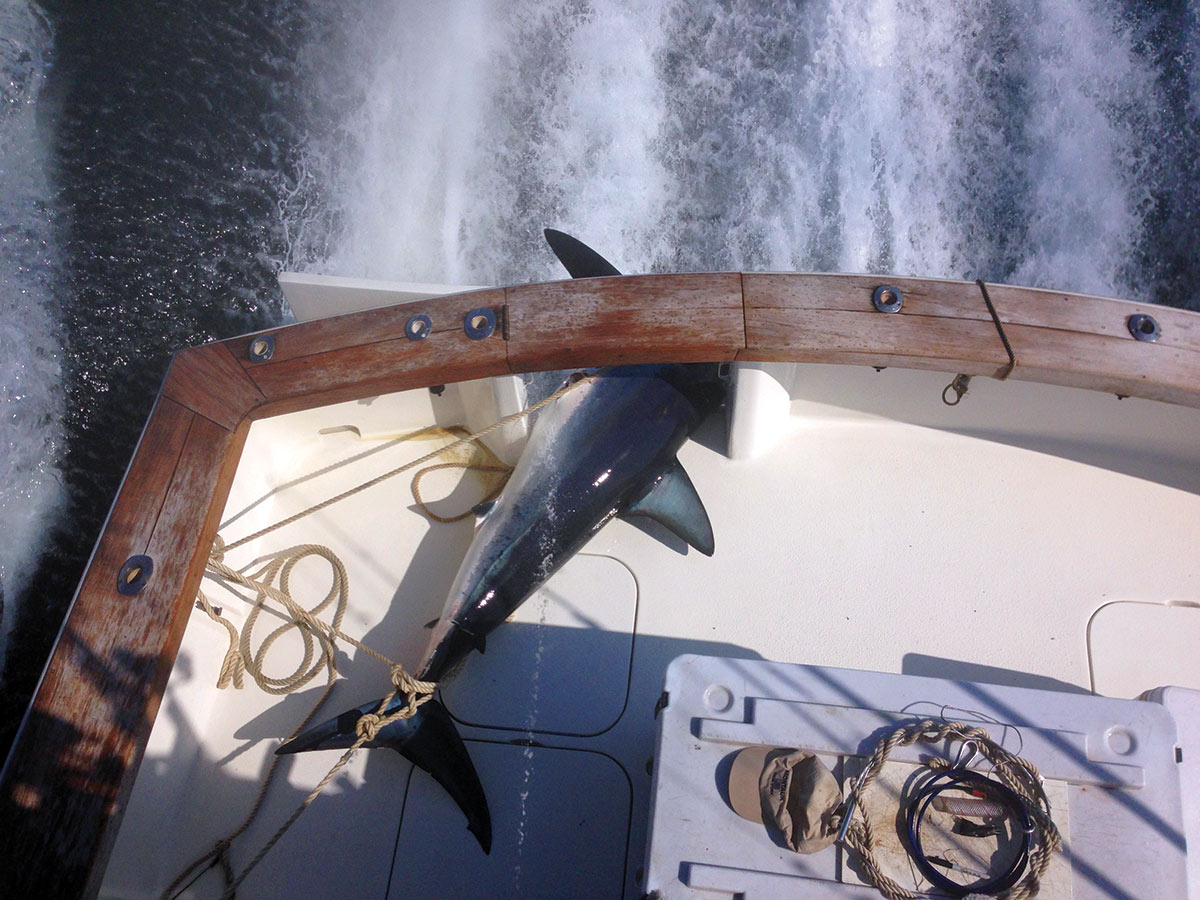
Twenty percent of captains catch 80 percent of the fish. Everyone else tells stories about the one that got away. The best captains and crew practice and have a game plan already in place before they hook up. The end game will make or break you. If you are not in a tournament, having a shark rigged harpoon is the safest way to capture a fish. If you are fishing an IGFA tournament leave the harpoon home. No kidding, don’t even have it on the boat, a competing crew can see it and protest your catch,regardless of whether it was used or not. Why even take a chance of raising the question?
Having two flying gaffs rigged and ready, one for each side of the boat gives you the ability to switch sides quickly without untying and retying the gaff rope. You should have a minimum of two gaff handles and four heads. The heads should have 3 feet of cable and 15 feet of rope. If the fish jumps and you get a decent guess on its size you can switch the heads to match. Having extra-large reinforced heads for fish larger than 300 pounds is important. If you see it’s a behemoth or a tournament winner on the end of your line get the proper gaff heads ready.
Tail ropes that consist of 6 feet of cable and 15 feet of rope are essential. The rope should have a spliced eye to make cleating easy. Alpine clips add versatility to the set up. You can clip and unclip when necessary. The 6 feet of cable gives structure and shape to your loop as you attempt to apply it. You don’t always need to apply a tail rope from the rear of the fish. The backwards method starts from the head and works its way back to the tail. When the fish is close you can slide the cable around the leader and clip it back on itself. Work the cable down the leader and around the shark’s head. The pectoral fins will easily fold back as the cable slides back. The trick is to get past them and make a decision. You can clinch it tight between the pectoral fin and the dorsal fin and like a gaff have a great connection in the middle of the fish. You can also work it over the dorsal fin back to the tail. Just remember to start cinching it up immediately after passing the middle as the fish’s body mass gets slim fast as you approach the tail.
Good luck, be safe, and please only harvest what you absolutely need.
